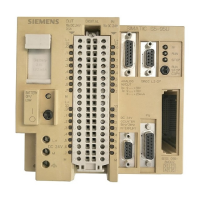OV Bit Evaluation
By evaluating the OV bit, you can identify an overflow without the F-CPU going into
STOP mode in the case of an overflow.
(If you do not evaluate the OV bit, an overflow causes the F-CPU to switch to
STOP mode if the result/quotient in an output is fed to an F I/O, or to a partner
F-CPU by means of safety-related CPU-to-CPU communication.)
If you want to program an OV bit scan, observe the following conditions:
Note
An OV bit scan is only permitted in the network following the network with the
operation that affected the OV bit.
The network with the OV bit scan must not be the destination of jump operation;
in other words, it must not contain a jump label.
If an OV bit scan is programmed in the network following the operation that
influences the OV bit, the execution time of the operation influencing the OV bit is
prolonged (see also Excel file for calculating the response time in the
...\Siemens\STEP7\S7Manual\s7fco\s7fcotib.xls folder).
!
Safety Note
If an OV bit scan is programmed in the network following the operation that
influences the OV bit and the result of the operation influencing the OV bit (an
ADD_I-, SUB_I-, MUL_I or NEG_I operation or the quotient of a DIV_I operation) is
outside the permitted range for integers (16 bits), the F-CPU does not change to
STOP.
The result/quotient behaves like the analogous operation in a standard user
program.
Product Information for the S7 Distributed Safety, Configuring and Programming Manual
30 A5E00169432-02

